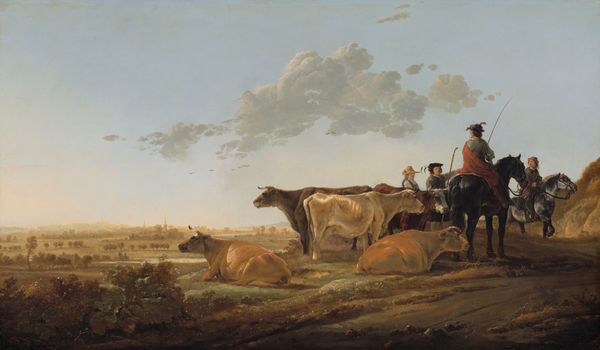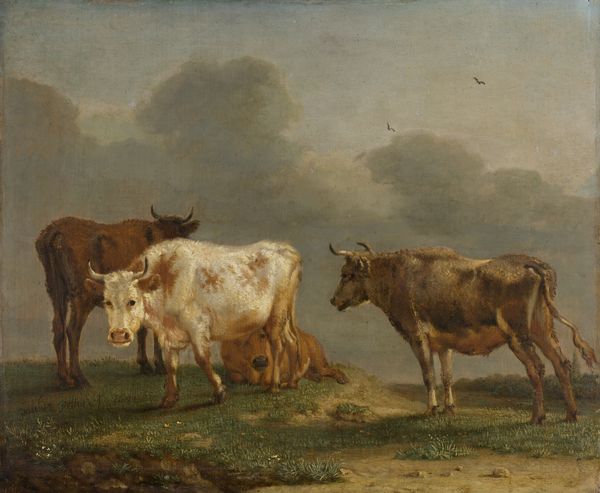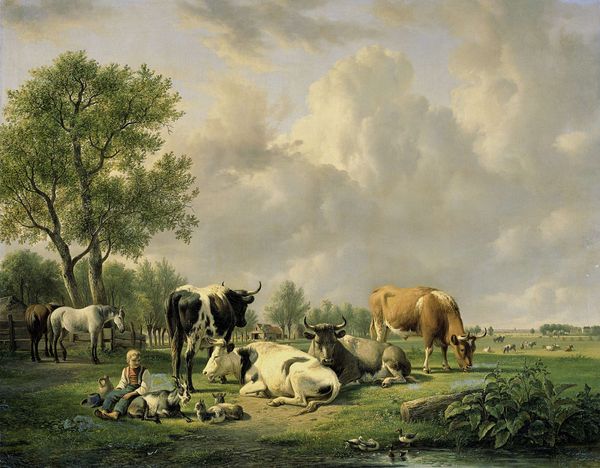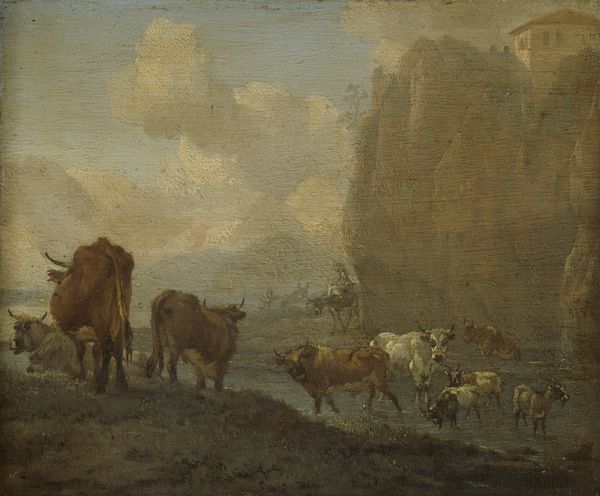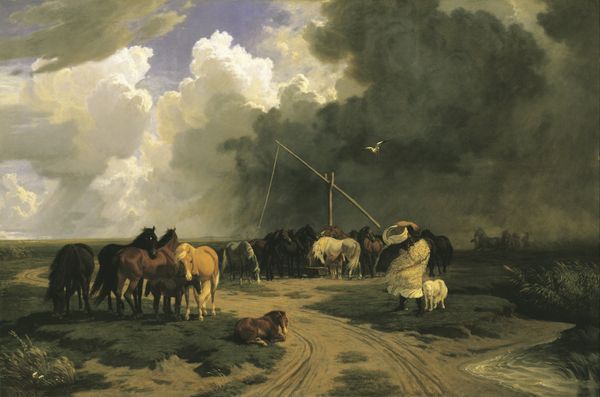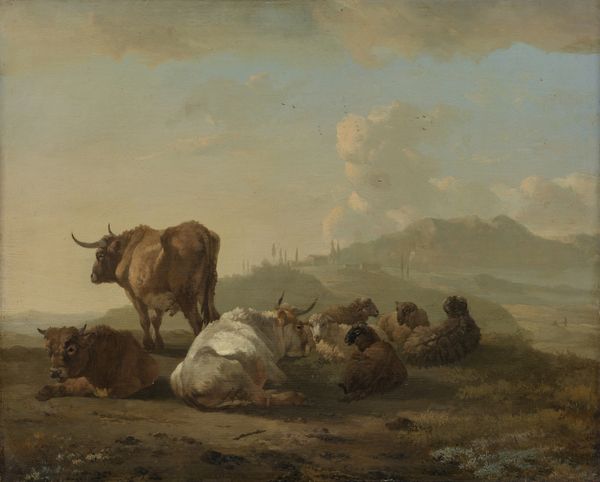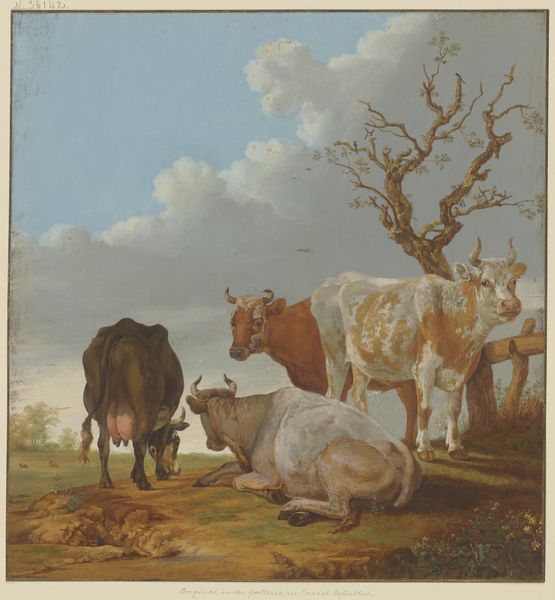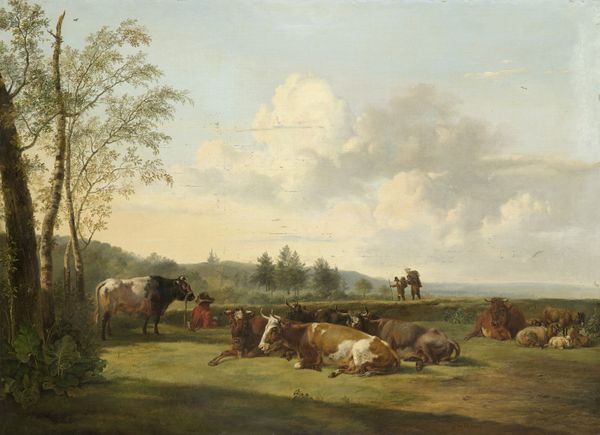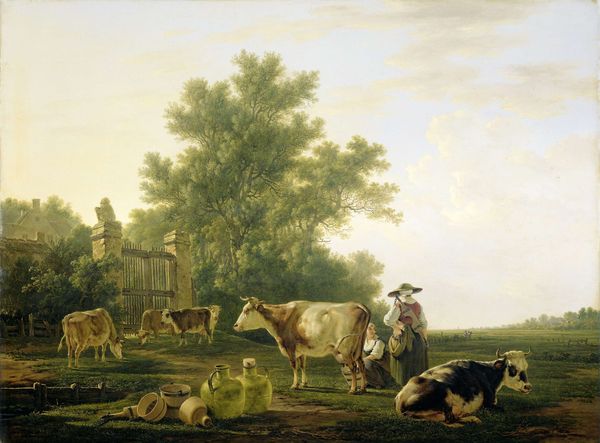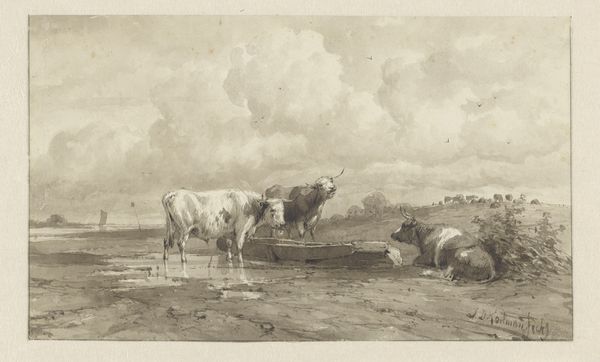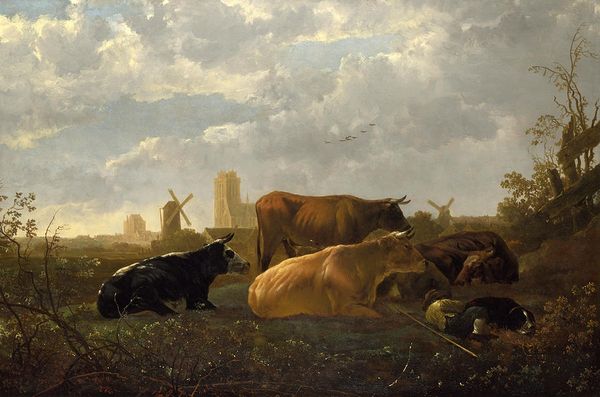
Landschap met koeien, schapen en herderin, gewijzigde kopie naar een schilderij van Paulus Potter, de herderin gekopieerd van een schilderij van Karel Dujardin (recto); onvoltooid portret van een man (verso) 1761
0:00
0:00
jeanetienneliotard
Rijksmuseum
watercolor
#
water colours
#
landscape
#
watercolor
#
genre-painting
#
watercolor
#
rococo
Dimensions: height 37 cm, width 46 cm, height 56 cm, width 64.5 cm, depth 7.5 cm
Copyright: Rijks Museum: Open Domain
Editor: Here we have Jean-Étienne Liotard’s "Landschap met koeien, schapen en herderin, gewijzigde kopie naar een schilderij van Paulus Potter, de herderin gekopieerd van een schilderij van Karel Dujardin (recto); onvoltooid portret van een man (verso)," from 1761, created with watercolors. It’s a pastoral scene; very calm, quite classic. How do you interpret this work? Curator: I see this landscape as a tableau vivant – a living picture. It recalls a collective cultural memory of an idealized pastoral life. Do you notice how the shepherdess seems somewhat detached, almost like a figure placed in a staged setting rather than genuinely interacting with the animals? Editor: Yes, she does appear quite separate. What's the significance of that detachment? Curator: It highlights the artifice inherent in these idyllic scenes. This wasn't necessarily "real" life. Instead, such images reinforced social values by picturing how life *ought* to be: harmony between humans, animals, and nature, reflecting Rococo ideals of tranquility and elegance, a painted fiction for consumption. This symbolic staging emphasizes how people longed to portray a specific relationship with the natural world, laden with philosophical assumptions of the time. Editor: So, the image acts as more than just a depiction of scenery. Curator: Precisely. Think of it as an aspirational emblem, a controlled, romanticized vision rather than an objective rendering of pastoral life, where each carefully positioned element works as an allegory of desired values. Editor: That’s fascinating! I hadn’t considered the symbolic staging of the scene and the underlying assumptions of what is idealized, but I can see how cultural values influenced even a landscape painting. Curator: And in recognizing that deliberate construct, we access a richer understanding of the period and its artistic language.
Comments
No comments
Be the first to comment and join the conversation on the ultimate creative platform.

